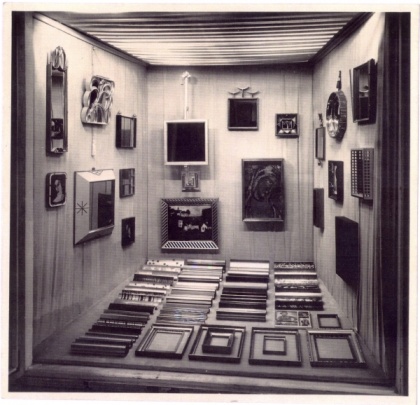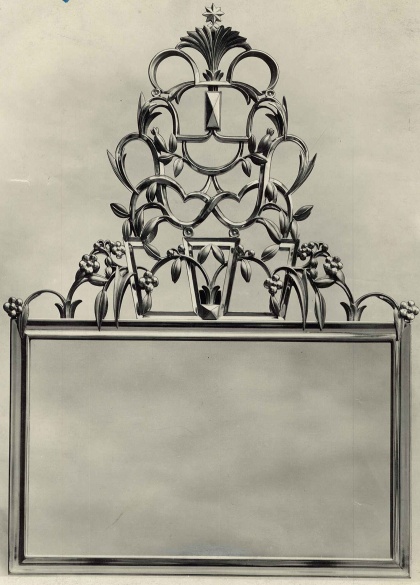
Max Welz Frames Vienna
In 1870, Johann Welz established a frame shop, a small handicraft business, which was located in the so-called Schrammhof in Bandgasse in Vienna’s seventh district and at first employed two or three workers. After economically difficult times due to the stock market collapse in 1873, the company started to prosper, expanding to 15 workers and several apprentices. Therefore, Welz moved his house and workshop to Dreilaufergasse (today’s Lindengasse) in the same district, producing richly carved, ornamented and gilded picture frames in different styles. Furthermore, he did gilding work on pieces of furniture and stucco decorations.
In 1890, with a staff of over 20, the company moved to No. 5 Neudeggergasse in Vienna’s eighth district, and at the same time ran a sales shop in No. 17 Breitegasse in Vienna’s seventh district. In the 1920s, the company moved to No. 45 Schottenfeldgasse.

After the founder’s death in 1896, the company was taken over by his son Maximilian Welz (born in 1876), who was only aged 19 at the time. In the early 20th century, Max Welz, who had been trained by a sculptor and a gilder, transformed the company into a manufacturing business of frames and frame wood mouldings. The company offered “wooden decorative mouldings for wall and furniture decorations manufactured according to its own method, and frames for originals and reproductions, mirrors, etc.” (advertisement of 1914).

This company providing all kinds of frames and gilding work prospered also after 1900. Max Welz became a member of the Österreichischer Werkbund and came into contact with the artists of the Viennese avantgarde. The Wiener Werkstätte started to collaborate with him and he implemented important designs by Dagobert Peche and Josef Hoffmann. Max Welz was the right person to carry out the unusual designs of this group of artists. Apart from a wide selection of classical and geometric frame wood mouldings, he also provided the repertory that matched the expressive design language of the early 1920s, where the mirror face would fade into the background due to the voluptuous decoration and, in individual pieces, would even be covered by carved ornament. Max Welz received important impulses from the collaboration with the Wiener Werkstätte. The product range was expanded to offer also clocks in addition to mirror and picture frames and, eventually, “smaller items of furniture” and lamps were manufactured. Max Welz remained in contact with Josef Hoffmann also after Wiener Werkstätte had closed down, as can be seen by a toilet table design of Josef Hoffmann, which was shown at an Austrian exhibition in London in 1934.
Ende der zwanziger Jahre war es ein weiteres Familienmitglied, Hans Welz, der durch seine EntwĂĽrfe einen neuen Weg in der Gestaltung fand. Dem folgten EntwĂĽrfe von Clemens Holzmeister, Carl Appel, Oswald Haerdtl, Alfred Soulek, Victor Lurje und Hans Bichler u.a.
By the end of the 1920s, another member of the Welz family, Hans Welz, found a new way in design with his creations, followed by designs by Clemens Holzmeister, Carl Appel, Oswald Haerdtl, Alfred Soulek, Victor Lurje, Hans Bichler and others.
From 1922 on, Max Welz was a board member of the Österreichischer Werkbund. His company participated in numerous exhibitions in Austria and abroad, among them in Paris in 1925, Barcelona in 1929, Brussels in 1935 and Paris in 1937, where he was each time awarded the “Grand Prix” for his professional performance.
After World War II, the company was taken over by the art shop and frame manufacturer Franz Uhlig.
Selected literature:
Interne Firmengeschichte
Ein Führer durch das österreichische Kunstgewerbe, L.W. Rochowanski (Hrsg.), Leipzig, Wien, Troppau 1930.












